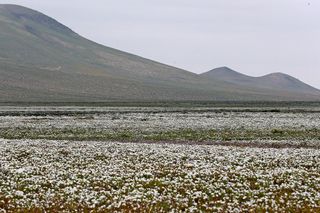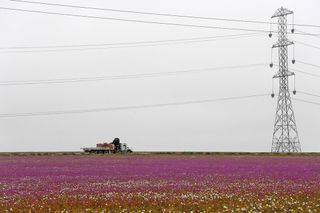Photos: Colorful Blooms Sprout Across the World's Driest Desert
Introduction

Chile's Atacama Desert, one of the world's driest places, is now flush with flowers after an unexpected rain.
The desert typically gets just 0.6 inches (15 millimeters) of rain a year. Even so, it's earned the name "desierto florido" (flowering desert) from locals because whenever it rains enough, dormant seeds in the soil take root, and burst into a wide array of yellow, orange, green, purple and red.
These "super blooms" typically happen every five to seven years because of El Niño, a climatic cycle in the Pacific Ocean. But the last super blooms sprung up in 2015, making this one a colorful and fragrant surprise.
Yellow posies

The once arid and barren landscape of the desert is now filled with flowers after an intense and surprising rainfall in northern Chile during the winter months. This photo was taken Aug. 17.
Purple fields

These colorful blooms usually attracts thousands of tourists, who travel to see and photograph the more than 200 floral species and native wildlife. This photo was taken Aug. 22.
Mountain backdrop

Yellow and black flowers fill the landscape like a lush, floral carpet.
Research suggests that before the Atacama became an arid desert, it was filled with marshes and lakes.
Popcorn-like flowers

Beautiful white flowers have turned this valley into a speckled white landscape.
Hearty plants

Heavy rains helped millions of seeds take root in the Atacama Desert, the highest and driest nonpolar desert on Earth.
Sign up for the Live Science daily newsletter now
Get the world’s most fascinating discoveries delivered straight to your inbox.

Laura is the archaeology and Life's Little Mysteries editor at Live Science. She also reports on general science, including paleontology. Her work has appeared in The New York Times, Scholastic, Popular Science and Spectrum, a site on autism research. She has won multiple awards from the Society of Professional Journalists and the Washington Newspaper Publishers Association for her reporting at a weekly newspaper near Seattle. Laura holds a bachelor's degree in English literature and psychology from Washington University in St. Louis and a master's degree in science writing from NYU.
Most Popular



